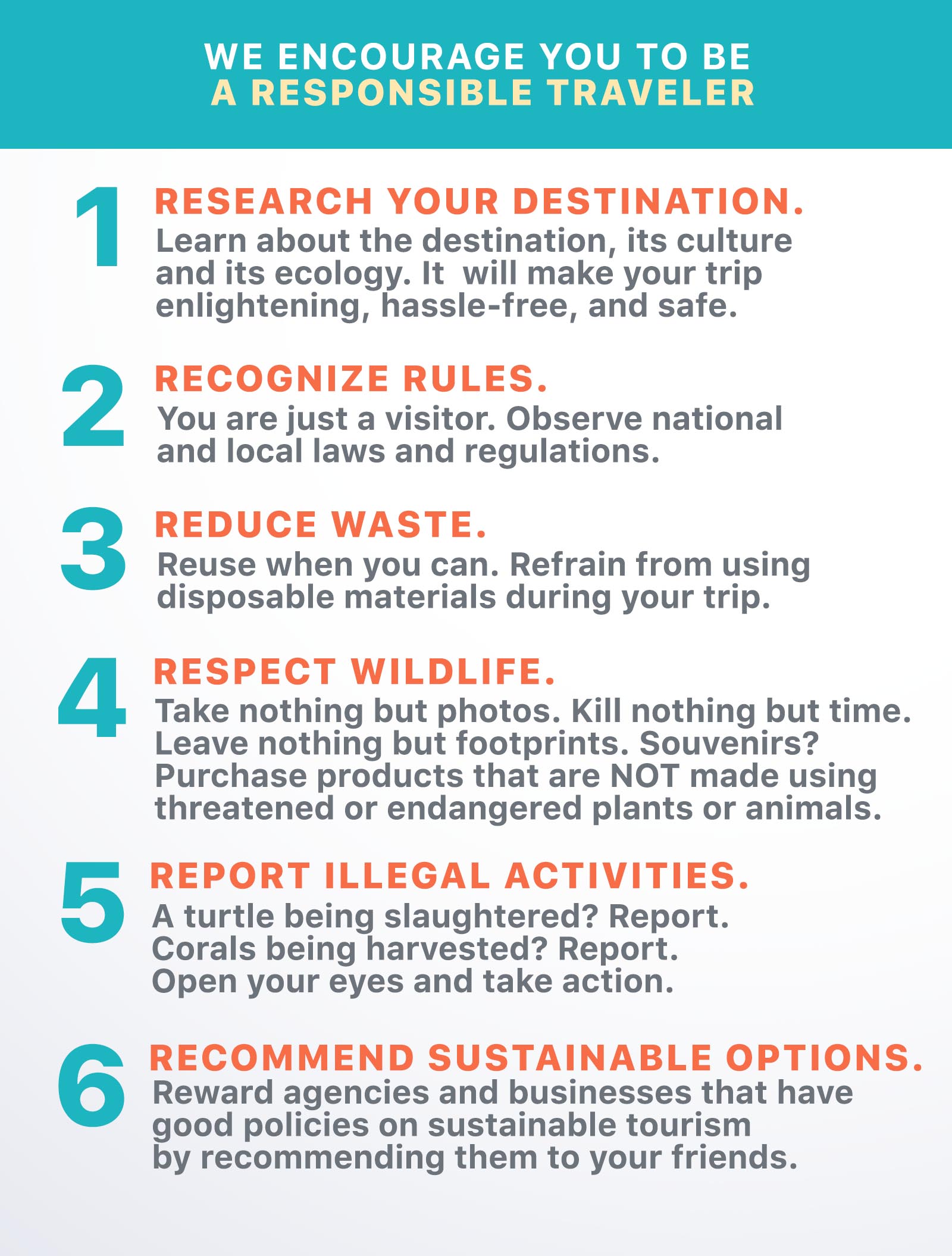
Mabuhay! Did you know that the Philippines has almost 200 languages? The exact number depends on the method of classification, but it’s still a lot, right? Tagalog is one of the widely spoken languages in the Philippines.
Filipino or Tagalog?
First things first! Filipino and English are the official languages in the Philippines. They are generally used as the language of instruction in the country’s educational system. Filipino is the national language. Although Filipino incorporates other languages in the Philippines, it is heavily based on the Tagalog language. Tagalog is primarily spoken in the National Capital Region or Metro Manila and other nearby provinces, but it is understood by the majority of the population in the country.
To show respect or politeness during conversations, Tagalog speakers typically use the words “po” and “opo”. You can simply add the Tagalog article “po” — usually at the end of the phrases and sentences. Meanwhile, “opo” is the polite version of saying “yes”. Other languages have different words for this purpose, or they may use formal speech instead.
If you’re an international traveler visiting the Philippines, keep reading as we list down some helpful Tagalog phrases and sentences for your trip!
NOTE: We will keep updating and adding to the list. Keep yourself posted by visiting this article from time to time. Let us also know in the comment section if you have clarifications or questions! If you are a fellow Filipino, feel free to suggest and add to this list! Salamat!
WHAT'S IN THIS GUIDE?
Mabuhay!
Before we proceed to the list, let’s rewind a little bit: Mabuhay!

This Tagalog word translates to “to live” or “long live” in English. While you may have heard this Filipino greeting many times, it’s not commonly used in everyday conversations among Filipinos. It is primarily used in formal settings, occasions, and events like tourism-related seminars and national celebrations. In casual settings, Filipinos usually opt for greetings such as “kumusta” or “maligayang pagdating”, or simply use English greetings like “hello” or “welcome”.
Additionally, incorporating English words into conversations is quite normal in the Philippines, giving rise to hybrid languages like “Taglish” — the portmanteau or the combination of Tagalog and English.
Are we clear po? So far, so good? Let’s go!
Practical Tagalog Words, Phrases, and Sentences
Make sure you are always connected, so you can easily access this article whenever you need to check some words or brush up on your Tagalog.
For foreign travelers, note that reliable public WiFi is scarce in the Philippines. It’s best to have a secure and private internet connection even when you travel. Your best option to get this is by purchasing an eSIM or a local SIM or renting a pocket WiFi unit. It’s simpler to purchase an eSIM or a local SIM so you don’t have to worry about having to return the pocket WiFi unit. However, if your phone does not allow you to use a different SIM, both options can be booked online and can be picked up at the airport.
Kumusta?
- Syllabification: ku‧mus‧ta
- Pronunciation: /kumus’ta/
This can also be spelled as “kamusta” and translates to “how are you” in English. We use this to greet people — both familiar faces and those we meet for the first time. This is also another way for us to say “hello” or “hi”.
Informal/Casual
Talking to one person: Kumusta ka? = How are you?
Talking to two or more persons: Kumusta kayo? = How are you?
Formal/Polite
Kumusta po? = How are you?
Kumusta po kayo? = How are you?
Kumusta po sila? = How are you?Note: Aside from adding “po”, the Tagalog personal pronouns kayo, which is the plural form of “you”, and sila, which is the equivalent of “they” or “them” in English are also used in formal settings and in addressing our elders.
Magandang Araw!
- Syllabification: ma‧gan‧dang a‧raw
- Pronunciation: /maɡan’dang ‘ʔaɾaw/
This translates to “good day” in English. We use this any time of the day. There’s no specific time. Your indicator? As long as the sun is still up! But if you want to be more specific, we say:
- Morning: Magandang umaga!
- Noon/Lunch Time: Magandang tanghali!
- Afternoon: Magandang hapon!
But when the sun sets, we say: Magandang gabi! Use this if you want to say “good evening” or “good night” in Tagalog.
Magandang araw! = Good day!
Magandang umaga! = Good morning!
Magandang tanghali! = Good day!
Magandang hapon! = Good afternoon!
Magandang gabi! = Good evening! | Good night!Note: Again, you can add “po” at the end to convey politeness.
Salamat!
- Syllabification: sa‧la‧mat
- Pronunciation: /sa’lamat/
This is how we say “thank you” in Tagalog. If we are feeling extra grateful, we say “Maraming salamat!”, which is the equivalent of “Thank you so much!” or “Thank you very much!”.
Salamat! = Thank you!
Maraming salamat! = Thank you so much! | Thank you very much!Note: As usual, you can add “po” at the end to convey politeness.
Paumanhin/Pasensya Na/Patawad
- Syllabification: [1] pa‧u‧man‧hin [2] pa‧sen‧si‧ya na [3] pa‧ta‧wad
- Pronunciation: [1] /paʔuman’hin/ [2] /pa’sensia na/ [3] /pa’tawad/
We use these statements to apologize or say “sorry”. We often use “pasensya na” in casual interactions. “Paumanhin” is more formal. In addition, we usually include or add “po” at the end when we use these Tagalog statements.
“Patawad” or “patawad po” is too formal and is employed only if you think you did something very grave or you really hurt someone.
Informal/Casual
Pasensya na.
Pasensya na po.
Formal/Polite
Paumanhin.
Paumanhin po.
Patawad.
Patawad po.
Walang Anuman!
- Syllabification: wa‧lang a‧nu‧man
- Pronunciation: /waˌlaŋ ʔanu’man/
This is one of the ways we say “welcome” or “you’re welcome” as a reply to a “thank you” statement. This can also be a positive response to an apology. Here are closer translations to English:
- No problem.
- No worries.
- It’s nothing.
- Don’t mention it.
As a reply to a “thank you” statement:
Walang anuman! = Welcome! | You’re welcome!
Walang anuman! = No problem!
Walang anuman! = No worries!
Walang anuman! = It’s nothing!
Walang anuman! = Don’t mention it!
As a reply to an apology:
Walang anuman. = No problem.
Walang anuman. = No worries.
Walang anuman. = It’s nothing.
Walang anuman. = Don’t mention it.
Walang anuman. = It’s okay.
Walang anuman. = It’s fine.
ASKS PB
This is not a Tagalog phrase or sentence. This is an acronym that we came up with for the basic question words in Tagalog. These are:
- A for ano [a‧no; /ʔa’no/], the Tagalog version of “what”.
- S for sino [si‧no; /’sino/], which translates to “who” in English.
- K for kailan [ka‧i‧lan; /kaʔi’lan/], which is equivalent to “when” in English.
- S for saan [sa‧an; /sa’ʔan/], the term we use to ask “where”.
- P for paano [pa‧a‧no; /pa’ʔano/], which is our way of saying “how”.
- B for bakit [ba‧kit; /ˈbakit/], which translates to “why” in English.
Here are some basic examples for each question word:
Ano? (What?)
What is your name?
- Informal/Casual: Ano ang pangalan mo?
- Formal/Polite: Ano po ang pangalan mo/niyo/nila?
Sino? (Who?)
Who are you with? | Who is with you?
- Informal/Casual: Sino ang kasama mo?
- Formal/Polite: Sino po ang kasama mo/niyo/nila?
Kailan? (When?)
When are you leaving?
- Informal/Casual: Kailan ang alis mo?
- Formal/Polite: Kailan po ang alis mo/niyo/nila?
Saan? (Where?)
Where is the toilet?
- Informal/Casual: Saan ang banyo/CR/restroom?
- Formal/Polite: Saan po ang banyo/CR/restroom?
Note: In the Philippines, we use “restroom” and “comfort room (CR)” to refer to public toilets or washrooms.
Paano? (How?)
How to get to the airport?
- Informal/Casual: Paano pumunta sa airport?
- Formal/Polite: Paano po pumunta sa airport?
Note: The Tagalog term for “airport” is paliparan BUT we don’t really use it in casual conversations. We generally use the English term “airport”.
Bakit? (Why?)
Why are you sad?
- Informal/Casual: Bakit ka malungkot?
- Formal/Polite: Bakit po kayo/sila malungkot?
Direksyon at Posisyon
This section is all about directions and positions. As you may have guessed, direksyon is the Tagalog for “direction” and posisyon for “position”. Here are some Tagalog words that signify directions and positions.
Direction/Position
Kanan [ka‧nan; /’kanan/] = Right
Kaliwa [ka‧li‧wa; /kali’waʔ/] = Left
Taas [ta‧as; /ta’ʔas/] = Up
Baba [ba‧ba; /’babaʔ/] = Down
Position
Ibabaw [i‧ba‧baw; /ʔi’babaw/] = Above/Top
Ilalim [i‧la‧lim; /ʔi’lalim/] = Below/Bottom
Harap [ha‧rap; /ha’ɾap/] = Front
Likod [li‧kod; /li’kod/] = Back
Gitna [git‧na; /ɡit’naʔ/] = Center/Middle
Direction of Movement
Abante [a‧ban‧te; /ʔa’bante/] = Forward
Atras [a‧tras; /ʔa’tɾas/] = Bakward
Diretso [di‧re‧tso; di’ɾet͡ʃo/] = Straight
Patagilid [pa‧ta‧gi‧lid; /pataɡi’lid/] = Sideward
Liko [li‧ko; /li’koʔ/] = Turn
Hilaga/Timog/Silangan/Kanluran
These are the four cardinal directions in Tagalog. Although the English terms for the cardinal directions are widely used in the country, learning the Tagalog counterparts might still come in handy in one of your adventure trips. And hey, learning new things is fun! Alright, here they are:
Cardinal Directions
Hilaga [hi‧la‧ga; /hi’laɡaʔ/] = North
Timog [ti‧mog; /’timoɡ/] = South
Silangan [si‧la‧ngan; /si’laŋan/] = East
Kanluran [kan‧lu‧ran; /kan’luɾan/] = West
If you are also interested in knowing the Tagalog terms for the ordinal directions, we got you! Here they are:
Ordinal Directions
Hilagang Silangan [hi‧la‧gang si‧la‧ngan; /hiˌlaɡaŋ si’laŋan/] = Northeast
Timog Silangan [ti‧mog si‧la‧ngan; /ˌtimoɡ si’laŋan/] = Southeast
Timog Kanluran [ti‧mog kan‧lu‧ran; /ˌtimoɡ kan’luɾan/] = Southwest
Hilagang Kanluran [hi‧la‧gang kan‧lu‧ran; /hiˌlaɡaŋ kan’luɾan/] = Northwest
Magkano?
- Syllabification: mag‧ka‧no
- Pronunciation: /maɡ’kano/
This is the Tagalog for “how much”. So, whether you are into shopping or not, learning how to say this is very helpful because we always have to purchase something or pay for services.
Informal/Casual
- General Use: Magkano? = How much?
- If the object is near you: Magkano ito? | Magkano ‘to? = How much is this?
- If the object is near the seller/service provider: Magkano iyan? | Magkano ‘yan? = How much is that?
- If the object is far from you and seller/service provider: Magkano iyon? | Magkano ‘yon? = How much is that?
Note: If you are referring to two or more items or services, just add “ang mga” before the Tagalog demonstrative pronouns “ito/’to”, “iyan/’yan”, and “iyon/’yon”. These are the equivalent of “these” and “those”.
Formal/Polite
- General Use: Magkano po? = How much?
- If the object is near you: Magkano po ito? | Magkano po ‘to? = How much is this?
- If the object is near the seller/service provider: Magkano po iyan? | Magkano po ‘yan? = How much is that?
- If the object is far from you and seller/service provider: Magkano po iyon? | Magkano po ‘yon? = How much is that?
Note: If you are referring to two or more items or services, just add “ang mga” before the Tagalog demonstrative pronouns “ito/’to”, “iyan/’yan”, and “iyon/’yon”. These are the equivalent of “these” and “those”.
Bayad/Para
- Syllabification: [1] ba‧yad [2] pa‧ra
- Pronunciation: [1] /’bajad/ [2] /’paɾa/
We use these terms when we commute via jeepney or tricycle. We say “bayad” or “bayad po” when handing over our payment to the driver. In English, this roughly translates to: “Here’s my fare/payment.” If you are in a jeepney and seated far from the driver, you can add “pakiabot po” right after saying “bayad po”. This is equivalent to saying, “Please pass my payment to the driver.” Don’t forget to say “salamat po” or “thank you”.
By the way, we also utter “bayad/bayad po” to get the attention of the seller or service provider when purchasing or paying for something.
Informal/Casual
- Short Form: Bayad. = Here’s my payment/fare.
- Long Form: Ito ang bayad ko. = Here’s my payment/fare.
Formal/Polite
- Short Form: Bayad po. = Here’s my payment/fare.
- Long Form: Ito po ang bayad ko. = Here’s my payment/fare.
Note: Add “pakiabot po” if your seat is far from the driver. This is the polite way of asking other passengers to pass your payment to the driver.
Some public utility vehicles have a system to signal the driver when a passenger wants to alight, but this feature is not common in most PUVs like jeepneys and tricycles. When we reach our destination, we say “para” or “para po” to signal the driver to stop, so we can get off the vehicle. The rough translation in English is “stop” or “this is my stop”.
Informal/Casual
Para! = Stop! | This is my stop!Formal/Polite
Para po! = Stop! | This is my stop!
Ngayon/Mamaya/Bukas/Kahapon
These are Tagalog words that indicate time or can answer the question “when”. Here are four essential Tagalog words for this category with their English translations.
Ngayon [nga‧yon; /ŋa’jon/] = Now
Mamaya [ma‧ma‧ya; /mama’jaʔ/] = Later
Bukas [bu‧kas; /’bukas/] = Tomorrow
Kahapon [ka‧ha‧pon; /ka’hapon/] = Yesterday
How do we say “today” and “tonight” in Tagalog? For the word “today”, you can go with “ngayong araw”, which is a direct translation of “this day” in Tagalog. Meanwhile, for the word “tonight”, you can say “ngayong gabi”, which is a direct translation of “this night” in Tagalog.
Ngayong Araw [nga‧yong a‧raw; /ŋa’joŋ ‘ʔaɾaw/] = Today / This day
Ngayong Gabi [nga‧yong ga‧bi; /ŋa’joŋ ɡa’bi/] = Tonight / This night / This evening
Bukas/Sarado
- Syllabification: [1] bu‧kas [2] sa‧ra‧do
- Pronunciation: [1] /bu’kas/ [2] /sa’ɾado/
“Bukas” means “open”, while “sarado” means “closed”. You might see or hear these words when checking the operating schedule of an establishment or an attraction you want to visit.
If you recall, we have already encountered this word: “bukas”, which means “tomorrow”. Is it the same Tagalog word for “open”?
The spelling is the same, but the pronunciation is different. If you mean to say the Tagalog word for “tomorrow”, you put the stress on the first syllable: BÚ-kas. If you are referring to the Tagalog word for “open”, you put the stress on the second syllable: bu-KÁS. Alright!
Bukás = Open
Sarado = ClosedBukás? | Bukás ba? | Bukás po? | Bukás po ba? = Is it open?
Sarado? | Sarado ba? | Sarado po? | Sarado po ba? = Is it closed?Bukás ngayon. | Bukás po ngayon. = It’s open now.
Sarado ngayon. | Sarado po ngayon. = It’s closed now.Bukás búkas. | Bukás po búkas. = It’s open tomorrow.
Sarado búkas. | Sarado po búkas. = It’s closed tomorrow.
Oo/Hindi
- Syllabification: [1] o‧o [2] hin‧di
- Pronunciation: [1] /’ʔoʔo/ [2] /hinˈdiʔ/
These Tagalog words are used to affirm, negate, and express agreement or disagreement with a statement or answer a “yes or no” question. And yes, that is your clue! “Oo” means “yes”; “hindi” means “no”.
But what if your answer is in between, meaning you are not yet sure? The casual Tagalog word for “maybe” are “siguro, bakâ, and yata”, while the formal Tagalog words are “marahil, maaari, and tila”.
Informal/Casual
- Oo = Yes
- Hindi = No
- Siguro [si‧gu‧ro; /si’ɡuɾo/] = Maybe | Perhaps
Bakâ [ba‧ka; /ba’kaʔ/] = Maybe | Perhaps
Yata [ya‧ta; /’jataʔ/] = Maybe | Perhaps
Formal/Polite
Opo = Yes Hindi po = No Siguro po = Maybe | Perhaps
Marahil [ma‧ra‧hil; /ma’ɾahil/] = Maybe | Perhaps
Maaari [ma‧a‧a‧ri; /maʔa’ʔaɾiʔ/] = Maybe | Perhaps
Tila [ti‧la; /’tila/] = Maybe | PerhapsNote: For “marahil”, “maaari”, and “tila”, you can also add the Tagalog article “po” if you want to sound more polite.
Sandali lang/Saglit lang/Teka lang
- Syllabification: [1] san‧da‧li [2] sag‧lit [3] te‧ka
- Pronunciation: [1] /sanda’liʔ/ [2] /saɡ’lit/ [3] /’teka/
These are all Tagalog statements for asking the person or persons you are talking to “to wait”.
- “Sandali” is the shortened version of ‘isang dali’, which means “one moment”.
- “Saglit” means “second” (1/60th of a minute).
- “Teka” is the short form of “hintay ka” or “maghintay ka”, which means “you wait”.
As for the Tagalog word “lang”, it is the shortened form of “lamang”, a Tagalog limiting particle that means “just” or “only”.
Sandali lang = Wait | Just a moment
Saglit lang = Wait | Just a second
Teka lang = Wait | Just hang onNote: Per usual, you can add “po” at the end to convey politeness.
Paalam!
- Syllabification: pa‧a‧lam
- Pronunciation: /pa’ʔalam/
This is used when you want to inform others that you are leaving already and bid them farewell. This is the Tagalog for “goodbye”. If you are planning to return to a place or see a person or people again, you can add this statement before or after paalam: “Hanggang sa muli!” This means “see you again” or “until we meet again”.

Sometimes, we cap this farewell remark with “ingat” to wish someone well. “Ingat” means “take care” or “be safe”. Although this is typically given by the people you are leaving behind, you can also utter the same greeting — ingat — to wish them well too.
Informal/Casual
- Paalam! = Goodbye!
- Paalam! Hanggang sa muli! = Goodbye! See you again!
Hanggang sa muli! Paalam! = See you again! Goodbye!- Ingat! = Take care! | Be safe!
Formal/Polite
- Paalam po! | Paalam po sa inyo! = Goodbye!
- Paalam po! Hanggang sa muli! = Goodbye! See you again!
Hanggang sa muli! Paalam po! = See you again! Goodbye!- Ingat po! | Ingat po kayo! | Ingat po sila! = Take care! | Be safe!
Again, these are just some of the basic Tagalog words, phrases, and sentences that may come in handy as you explore Manila and other parts of the Philippines. What should we add to this list? Suggestions are very much welcome! Let us know in the comment section!
Updates Log
2024.10.03 – First uploaded
Related Article: NAIA (Manila Airport) Transportation Guide
More Tips on YouTube ⬇️⬇️⬇️




Comments